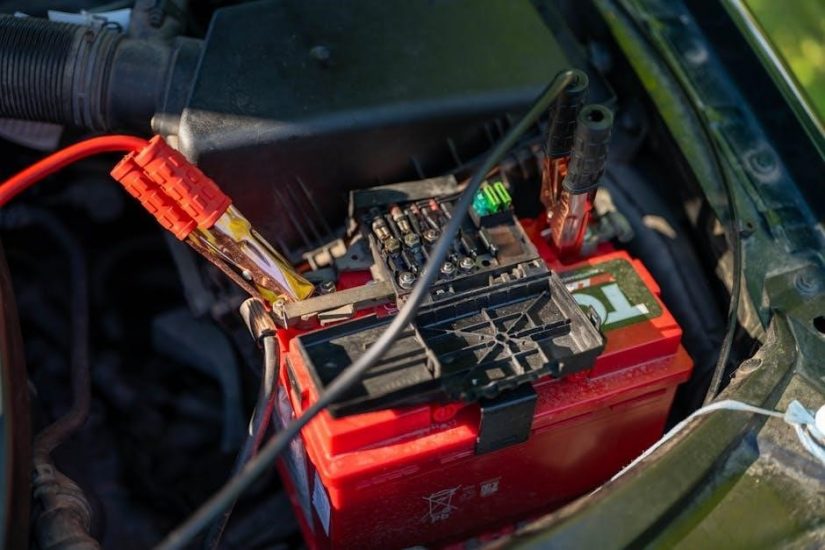The Exide Battery Charger is a versatile and efficient charging solution designed for lead-acid batteries‚ including 12V conventional flooded and AGM (VRLA) types. It features advanced charging algorithms‚ temperature compensation‚ and safety protections. User manuals provide detailed setup‚ operation‚ and troubleshooting guidance.
1.1 Overview
The Exide Battery Charger is a reliable and efficient charging solution designed for various lead-acid battery types‚ including 12V conventional flooded and AGM (VRLA) batteries. It is engineered to provide optimal charging performance‚ ensuring longevity and health of the battery. The charger features advanced algorithms tailored to different battery types and capacities‚ making it suitable for both light and heavy industrial applications. With a user-friendly interface and robust safety protections‚ it ensures safe and efficient charging. The charger is compatible with a wide range of battery sizes‚ from 1-150 Ah‚ and includes temperature compensation for precise charging in varying environments. Its design ensures compliance with industrial standards‚ making it a versatile choice for diverse power needs. The Exide Battery Charger is supported by comprehensive user manuals‚ which include detailed installation‚ operation‚ and troubleshooting guides to help users maximize its performance and extend battery life. Whether for automotive‚ industrial‚ or standby power systems‚ this charger delivers consistent and reliable results.
1.2 Key Features
The Exide Battery Charger is equipped with a range of innovative features designed to ensure safe‚ efficient‚ and optimal charging for lead-acid batteries. Its advanced temperature compensator adjusts charging parameters to suit varying environmental conditions‚ preventing overcharging and extending battery life. The charger supports multiple battery types‚ including 12V conventional flooded and AGM (VRLA) batteries‚ with compatibility for capacities ranging from 1-150 Ah. It features a user-friendly interface with clear LED indicators for status monitoring and error detection. Safety protections include overcharge prevention‚ short-circuit protection‚ and thermal overload safeguards. The charger also offers programmable modes‚ allowing users to customize charging settings for specific battery needs. Its robust design ensures durability and reliability in both light and heavy industrial applications. Additionally‚ the charger is backed by comprehensive user manuals‚ providing detailed guidance for installation‚ operation‚ and troubleshooting. These features make the Exide Battery Charger a versatile and reliable solution for maintaining and extending the life of various lead-acid battery systems. Its advanced technology and user-centric design ensure efficient and safe charging experiences.

Safety Precautions
When using the Exide Battery Charger‚ it is essential to adhere to the following safety precautions to ensure safe and effective operation. Always wear protective eyewear and gloves when handling batteries or operating the charger. Work in a well-ventilated area‚ away from open flames or sparks‚ as batteries may emit flammable gases during charging. Avoid overcharging‚ as this can cause battery damage or overheating. Ensure the charger is placed on a stable‚ heat-resistant surface‚ away from direct sunlight or moisture. Never connect the charger to a battery with loose or corroded terminals‚ as this can lead to short circuits or electrical hazards. Always disconnect the battery from the vehicle or equipment before charging. Keep children and pets away from the charger and battery during operation. Do not modify or tamper with the charger‚ as this may void the warranty and pose safety risks. In case of an emergency‚ such as a battery leak or charger malfunction‚ disconnect the power supply immediately and follow proper safety protocols. Always refer to the user manual for specific guidelines and precautions to ensure safe and optimal charging.

Installation and Setup
Before using the Exide Battery Charger‚ proper installation and setup are crucial to ensure optimal performance. Begin by selecting a well-ventilated‚ dry‚ and stable location for the charger. Ensure the surface is heat-resistant and away from flammable materials. Unpack the charger and inspect it for any damage or defects. Connect the charger to a suitable power supply‚ ensuring the voltage matches the charger’s requirements. Position the battery in an area where it can be easily accessed and secured. Follow the manufacturer’s guidelines for placing the battery in a upright position to prevent acid spills. Once the battery is in place‚ ensure all terminals are clean and free from corrosion. Connect the charger to the battery‚ matching the positive and negative terminals correctly. Refer to the user manual for specific wiring diagrams or instructions. Finally‚ set up the charger according to the type of battery you are using‚ ensuring all settings are configured properly. If unsure about any step‚ consult a professional to avoid potential errors; Proper installation ensures safe and efficient charging of your battery.
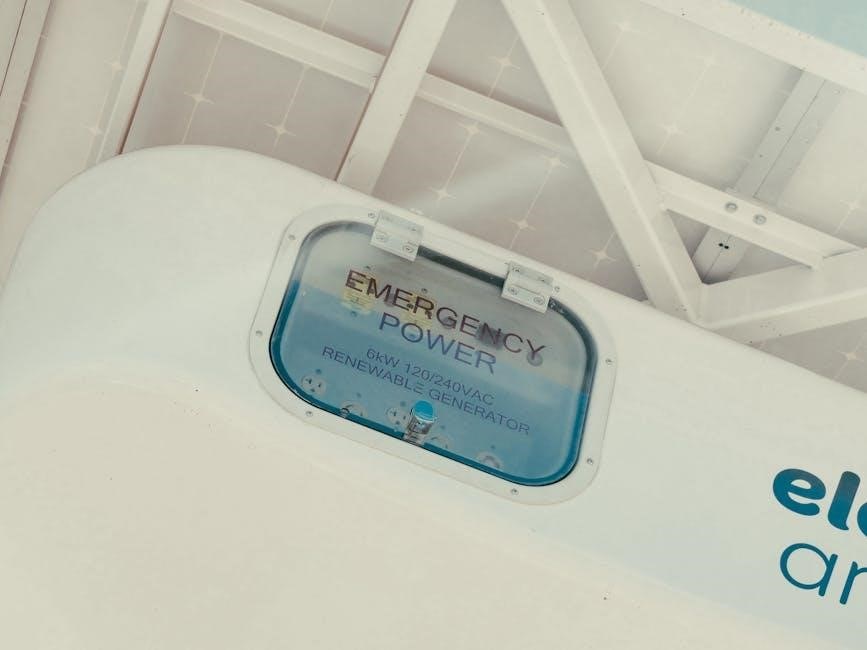
Operating Instructions
Turn on the charger and select the appropriate mode for your battery type. Monitor the charging process to avoid overcharging. Ensure the charger is disconnected from the power source when not in use. Always follow safety guidelines.
4.1 Connecting the Charger
Start by ensuring the charger is placed on a stable‚ flat surface away from flammable materials. Plug the charger into a suitable power outlet‚ but keep it switched off. Next‚ locate the positive and negative terminals on your battery‚ ensuring they are clean and free of corrosion. Attach the charger’s positive (red) clamp to the battery’s positive terminal and the negative (black) clamp to the negative terminal. Avoid reversing the connections‚ as this can cause damage to the charger or battery. Tighten the clamps securely‚ but avoid over-tightening‚ which could damage the terminals. Once connected‚ turn on the charger and allow it to begin charging. If your charger has an LED indicator‚ it will typically light up to confirm the connection. Always refer to your Exide battery charger manual for specific instructions‚ as models may vary slightly. Proper connection is crucial for safe and efficient charging. Follow all safety guidelines to prevent accidents or equipment damage.
4.2 Selecting the Correct Mode
Selecting the correct charging mode is essential for optimal performance and battery longevity. Most Exide battery chargers come with multiple modes tailored to different battery types and charging needs. The standard mode is ideal for regular charging‚ while the rapid mode is designed for quick top-ups when time is limited. For deeply discharged batteries‚ use the deep cycle or recovery mode to ensure a full and safe charge. Some models also feature a maintenance or trickle charge mode‚ which is perfect for keeping batteries charged over extended periods without overcharging. Always refer to the LED indicators or digital display on your charger to confirm the selected mode. Ensure the mode matches your battery type‚ as specified in the user manual. Incorrect mode selection could lead to inefficient charging or potential damage. If unsure‚ consult the manual or contact customer support for guidance. Proper mode selection ensures your Exide battery charger operates efficiently and safely‚ extending the life of your battery. Always monitor the charging process to avoid overcharging‚ which can harm the battery and reduce its lifespan.

Battery Types and Charging
The Exide battery charger supports various battery types‚ including conventional flooded‚ AGM‚ and deep-cycle batteries. Each type requires specific charging settings to ensure optimal performance and longevity. Always match the charger settings to your battery type for safe and efficient charging.
- Conventional flooded batteries: Standard charging mode.
- AGM batteries: Requires a specialized AGM mode for proper charging.
- Deep-cycle batteries: Use a deep cycle or maintenance mode to prevent overcharging.
Ensure compatibility with your battery type for reliable operation.
5.1 12V Conventional Flooded Batteries
Conventional flooded batteries are the most common type of lead-acid battery and are widely used in automotive and industrial applications. These batteries feature removable caps that allow users to check and maintain the electrolyte levels‚ ensuring proper functionality. The Exide battery charger is designed to charge 12V conventional flooded batteries efficiently‚ providing a reliable power source for vehicles‚ boats‚ and equipment.
To charge a 12V conventional flooded battery‚ ensure the charger is set to the correct voltage and mode. The recommended charge rate for these batteries is typically between 10% to 20% of the battery’s capacity. For example‚ a 50Ah battery should be charged at 5-10A. Overcharging can damage the battery‚ so monitor the charging process closely.
- Always ensure the battery is in a well-ventilated area during charging to prevent hydrogen gas buildup.
- Check the electrolyte level before and after charging‚ and top it up with distilled water if necessary.
- Avoid deep discharges‚ as they can reduce the battery’s lifespan.
For optimal performance‚ use the charger’s standard charging mode for conventional flooded batteries. Equalization charging may be required periodically to balance the cells and maintain health;
5.2 12V AGM (VRLA) Batteries
12V AGM (Absorbent Glass Mat) or VRLA (Valve-Regulated Lead-Acid) batteries are maintenance-free‚ sealed designs that offer superior performance in deep-cycle and standby applications. Unlike conventional flooded batteries‚ AGM batteries are spill-proof and leak-resistant‚ making them ideal for sensitive electronics and applications where vibration or tilting is common. The Exide battery charger is compatible with AGM batteries‚ ensuring safe and efficient charging.
When charging AGM batteries‚ it is crucial to use the charger’s AGM-specific mode‚ as these batteries require a lower maximum charge voltage (typically 14.4V to 14.7V) compared to conventional flooded batteries. Overcharging can cause premature aging‚ so the charger’s built-in voltage regulation is essential. AGM batteries also benefit from a lower float voltage to maintain charge without overcharging.
- Always refer to the battery manufacturer’s recommendations for specific charge and float voltages.
- AGM batteries should not be deeply discharged regularly‚ as this can reduce their lifespan.
- Use the charger’s temperature sensor if available‚ as AGM batteries are sensitive to high charging temperatures.
By following these guidelines‚ you can ensure optimal charging and extend the service life of your 12V AGM batteries.

Charging Algorithms
The Exide battery charger employs advanced charging algorithms to ensure optimal charging for various battery types. These algorithms are designed to maximize battery life‚ efficiency‚ and safety. The charger operates in multiple stages‚ starting with a bulk charge phase to rapidly replenish the battery’s energy. This is followed by an absorption phase‚ where the charge rate is reduced to prevent overcharging while the battery reaches its full capacity.
A float phase is then activated to maintain the battery at its optimal voltage‚ preventing deep discharges and extending its lifespan. The charger also includes a maintenance phase for long-term storage‚ ensuring the battery remains charged without overcharging. These algorithms automatically adjust based on the battery’s condition‚ temperature‚ and type‚ ensuring a safe and efficient charging process.
- The charger’s multi-stage charging prevents damage from overcharging or undercharging.
- Temperature compensation ensures charging is optimized for ambient conditions.
- The algorithms adapt to the battery’s age and capacity for precise charging.
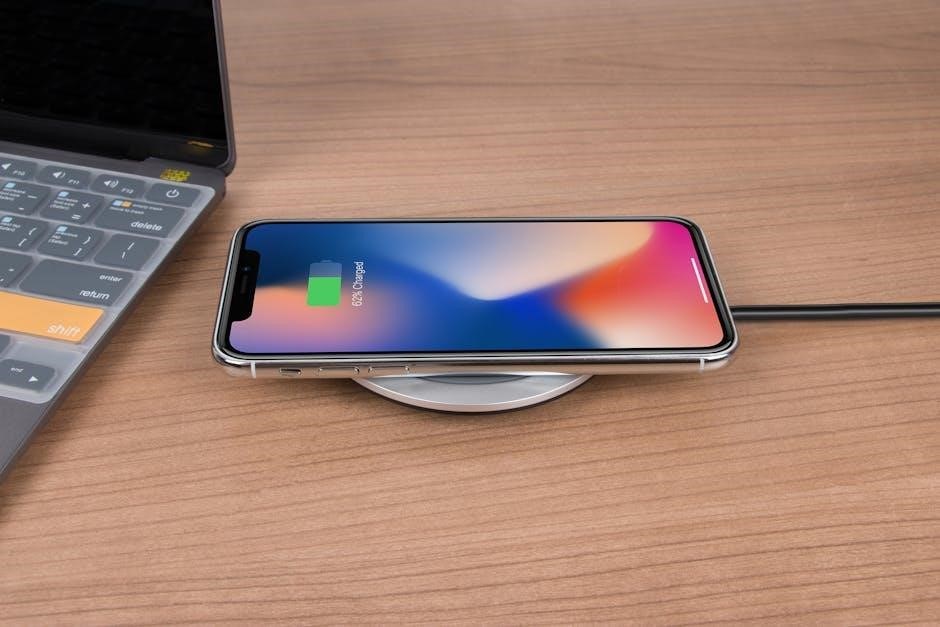
Error Codes and Troubleshooting
The Exide battery charger is equipped with an error code system to help identify and resolve common issues. These codes are displayed on the charger’s screen and are accompanied by specific solutions to ensure proper functionality. Below are some common error codes and their corresponding troubleshooting steps:
- E1: Indicates an open circuit or faulty battery connection. Check the battery terminals for cleanliness and ensure they are securely connected.
- E2: Signifies a short circuit in the battery or wiring. Inspect the cables and connections for damage or improper configuration.
- E3: Refers to an overheating issue. Allow the charger to cool down‚ ensure proper ventilation‚ and check for blockages in the cooling vents.
- E4: Indicates a communication error between the charger and battery. Restart the charger and ensure compatibility with the battery type.
- E5: Signals a failed charging cycle. Reset the charger and try again. If the issue persists‚ contact customer support.
For unresolved issues‚ refer to the user manual or contact Exide’s customer service for further assistance.

Maintenance and Care
Regular maintenance and proper care are essential to ensure the longevity and efficiency of your Exide battery charger. Start by cleaning the charger and battery terminals with a soft cloth to remove dirt‚ grease‚ or corrosion. This prevents poor electrical connections and ensures optimal charging performance.
- Inspect the cables and connectors for signs of wear or damage. Replace any damaged components immediately to avoid charging issues.
- Store the charger in a cool‚ dry place‚ away from direct sunlight and moisture‚ to prevent overheating and electrical damage.
- Always disconnect the charger from the power source when not in use to conserve energy and reduce wear on internal components.
- Check the charger’s cooling vents regularly to ensure they are free from dust or debris‚ which could impair its ability to regulate temperature.
- Refer to the user manual for specific maintenance recommendations tailored to your charger model.
By following these maintenance tips‚ you can extend the lifespan of your Exide battery charger and ensure it continues to perform at its best.
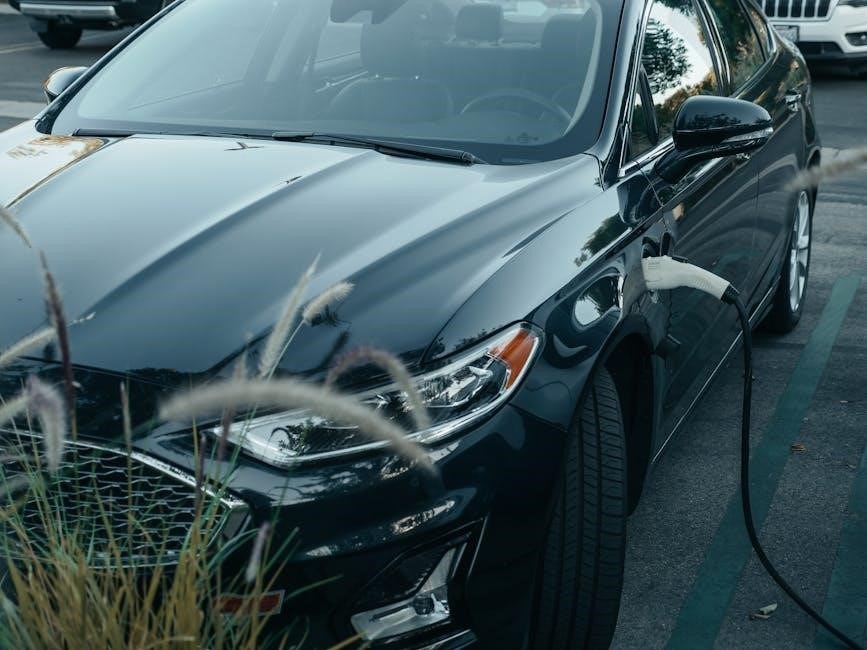
Technical Specifications
The Exide battery charger is designed to deliver reliable performance with advanced charging technology. Its technical specifications ensure compatibility with a wide range of battery types and provide efficient charging solutions.
- Input Voltage: 230V AC‚ 50Hz (standard for most models).
- Output Voltage: 12V or 24V DC‚ depending on the battery type.
- Charging Current: Adjustable between 5A to 20A‚ catering to different battery capacities.
- Efficiency: High-efficiency design with an average efficiency of 85% or higher.
- Compatibility: Suitable for 12V conventional flooded batteries and 12V AGM (VRLA) batteries.
- Safety Certifications: Meets international safety standards such as CE‚ ETL‚ and RoHS.
- Dimensions: Compact design with approximate dimensions of 250mm x 150mm x 100mm.
- Weight: Lightweight construction‚ typically around 3kg for easy portability.
- Operating Temperature: Designed to function efficiently in temperatures between 0°C to 40°C.
- Humidity Tolerance: Operates effectively in relative humidity up to 80%.
These specifications ensure the Exide battery charger is a versatile and reliable solution for various battery charging needs‚ providing consistent performance and durability.
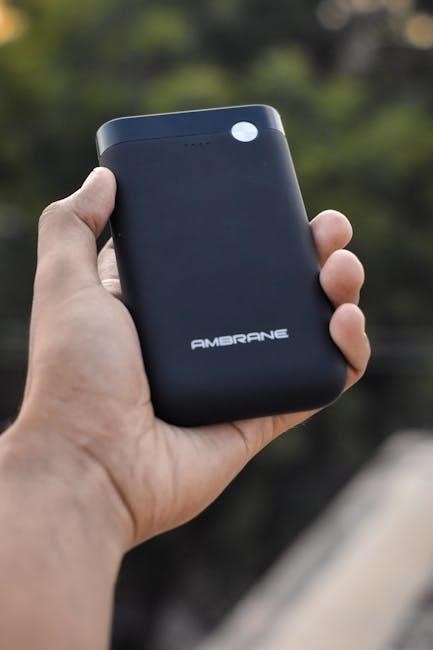
Accessing the User Manual
To ensure optimal use of the Exide battery charger‚ it is essential to refer to the user manual for detailed instructions‚ safety guidelines‚ and troubleshooting tips. The user manual is provided with the product at the time of purchase and is also available online for easy access.
- Physical Copy: A printed copy of the user manual is included in the packaging.
- Digital Copy: You can download the manual from the official Exide website. Visit the support section and search for your charger model;
- Steps to Download:
- Go to the official Exide website.
- Navigate to the “Support” or “Downloads” section.
- Enter your charger model number.
- Select the appropriate manual and download it.
- Alternative Sources: If the manual is misplaced‚ contact Exide customer support for assistance.
Regularly reviewing the user manual ensures safe and effective operation of the Exide battery charger. Always refer to the manual for specific instructions tailored to your charger model.
